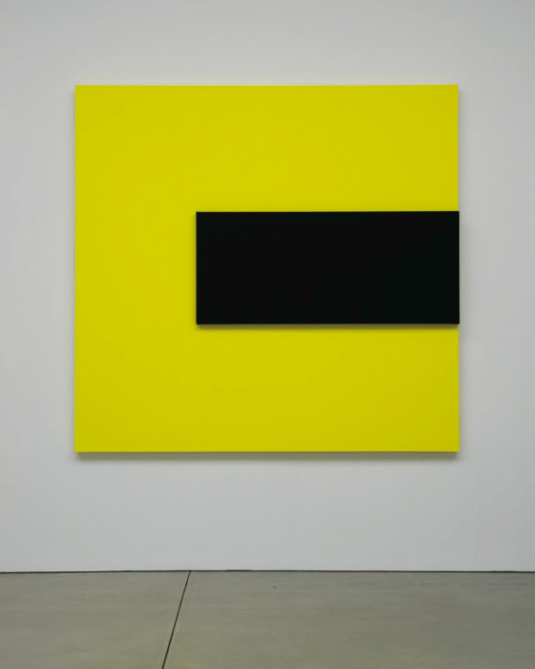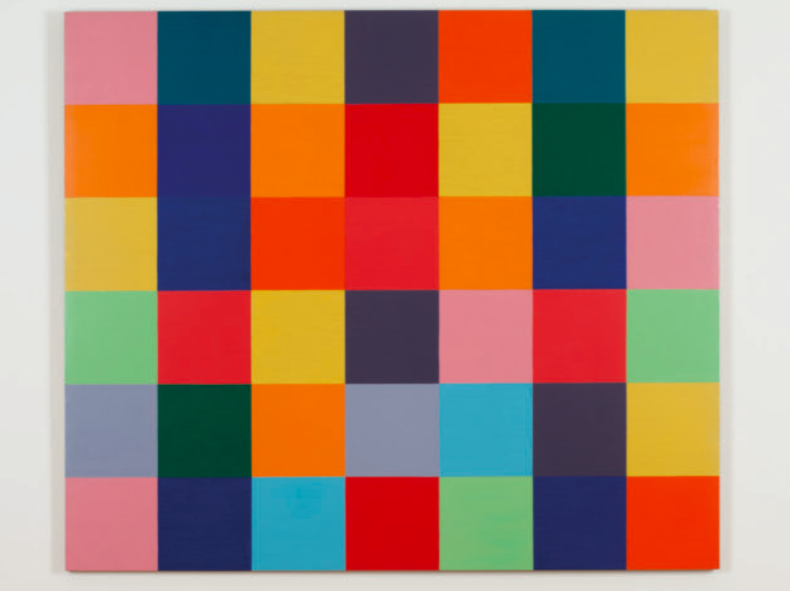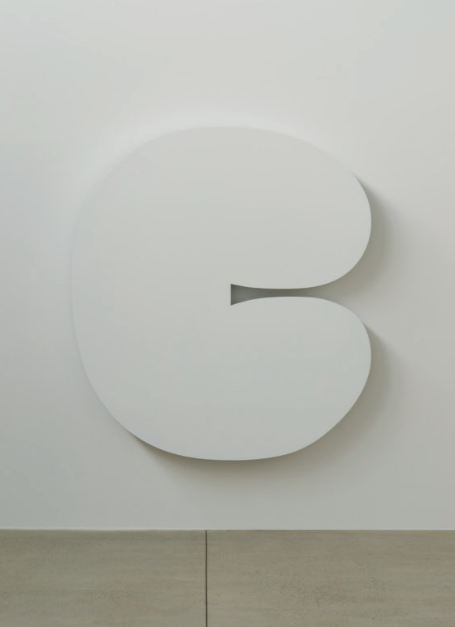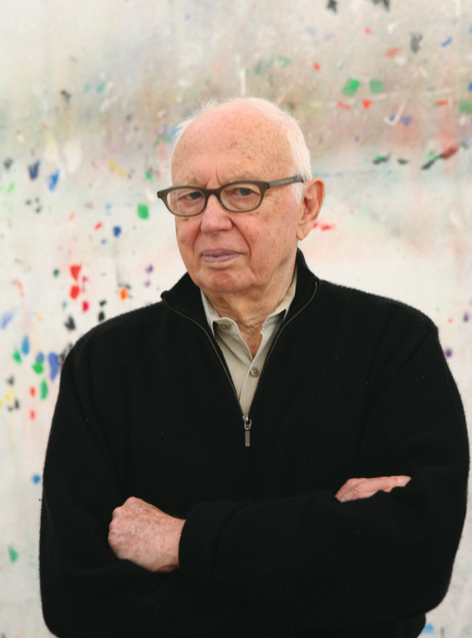Yesterday, the world learned the sad news that artist Ellsworth Kelly had died at the age of 92. Whitewall featured Kelly in our fall 2015 issue last September, where he was interviewed by the Dallas Museum of Art‘s Gavin Delahunty. That story is below.
***************

Red White
For Ellsworth Kelly, 2015 has already been an incredible year. The artist held a highly acclaimed solo show at Matthew Marks Gallery in New York; the Louis Vuitton Foundation commissioned a major work for the auditorium of their new Frank Gehry–designed building in Paris; the Blanton Museum of Art at the University of Texas at Austin announced that it will acquire and construct Austin, the only freestanding building he’s ever designed; and volume one of Yve-Alain Bois’ Ellsworth Kelly: Catalogue Raisonné of Paintings, Reliefs, and Sculpture has been published, along with Tricia Paik’s authoritative monograph on his work for Phaidon. In October, as part of TWO x TWO for AIDS and Art 2015, he will receive the amfAR Award of Excellence for Artistic Contributions to the Fight Against AIDS. Gavin Delahunty, the Hoffman Family Senior Curator of Contemporary Art at the Dallas Museum of Art, spoke with the artist about his latest triumphs.
GAVIN DELAHUNTY: Does a year of achievements such as these force a certain self-examination?

2014
ELLSWORTH KELLY: I have always assessed myself, but as I get older it is a different sort of assessment than it used to be. I remain sensitive to reviews of my work. For example, one article about my recent exhibition in New York described the show as “absolutely real”—that was interesting to me. Overall, I’m feeling pretty good about my achievements so far this year.
GD: You have a special relationship with Dallas that has endured over thirty years. In 2004 the DMA staged the exhibition “Ellsworth Kelly in Dallas” to document and celebrate this extraordinary relationship with the Dallas art community. What has drawn you to Dallas, and Dallas to you?

Oil on canvas, four joined panels
70 1/4 x 70 inches
EK: I have always appreciated cities with great art collections, and Dallas is home to some wonderful art. The Texas museums, in Dallas, Houston, Fort Worth, and Austin, have done great things and have a lot of important art. I see them alongside other great museums in the United States.
GD: Can you tell us a little something about the process of delivering two major commissions for the Dallas Arts District? Namely, Untitled [1982–83] for the opening of Edward Larrabee Barnes Dallas Museum of Art in 1984 and the “Dallas Panels” produced for I. M. Pei’s Meyerson Symphony Center in 1989?

Photo by Jerry L. Thompson
EK: The architect, Edward Larrabee Barnes, and the then-director of the Dallas Museum of Art, Harry S. Parker III, asked me to propose a work for the newly designed sculpture garden.
I had done a number of sculptures I call “rockers.” The first, titled Pony, was done in 1959 and is now at the Walker in Minneapolis. A second one is in the Stedelijk Museum in Amsterdam. The rockers are made using two curves that rest on the ground: each piece uses a different angle. They look as if they could rock, but of course they are too heavy.
For the Dallas museum I knew I wanted a larger rocker. I made three models, experimenting with different angles, and I chose the sharpest angle. The finished sculpture is ten feet high, so of course it was incredibly heavy. I remember vividly the day we lifted it into place by the pool in front of the waterfalls.
With regard to the Meyerson Symphony Center, I. M. Pei commissioned me to make a sculptural piece for the entrance. I went to Dallas and met with everyone involved with the project. I decided that I wanted to make four massive color panels. I knew that I didn’t want any other color in the lobby, and Pei agreed.
So the “Dallas Panels” are four 35-foot panels, each just over four feet wide, separated on the wall, and painted blue, green, black, and red. I’ve always thought that it was a portrait of Dallas—the blue sky, the green hills, black for oil, and red for fire.
GD: The Dallas Museum of Art is proud to have in its collection a single panel painting from the 1980s, Red Panel [1980]. Can you speak to how this work has a sense of both painting and sculpture?
EK: Red Panel is one of the early monochrome paintings. A lot of people have done rectangular monochromes; I felt that if I was to make a monochrome, it had to have a different shape as well.
My very first monochrome was Tableau Vert, which I painted in 1952, just days after I saw all the large, late paintings of Monet at his studio in Giverny.
The other panel monochromes came out of my early sculpture. I remember when the single panel, Yellow Piece [1966], was shown at the Venice Biennale in 1966, the British sculptor Anthony Caro stopped by to see it and said to me, “That should be a sculpture,” and I said, “No, it’s a painting.”
It was a long time after that before I made another panel painting of just one solid color, but since then there have been many more.
GD: Three of my all-time favorite works of yours are housed in private collections in Dallas: Sanary [1952], with its exhilarating blocks of color; the combined brilliance of Blue over Yellow [1967–68], and the sweeping curve of Yellow Curve III [1982]. Can you describe the origins of these paintings?
EK: A lot of my work began in Paris in the early 1950s. At that time, I was very interested in exploring the idea of chance. Working with colored gummed paper, or papier gommette, cut into one-inch squares, I made a series of eight collages, Spectrum Colors Arranged by Chance I–VIII [1951–53].
Each collage is 40 inches by 40 inches and so contains 1,600 one-inch squares. I put each collage together very quickly, without planning, and I changed the process for each one.
I took all the unused squares with me when I traveled to Sanary in the south of France in the fall of 1951, and they became the basis for Colors for a Large Wall [1951], which is in the collection of the Museum of Modern Art in New York, and Sanary, which is in Dallas.
It was a coincidence that I had exactly the right number of squares to create these two paintings. Do you see what I mean by chance? Pulling colors out of a box.
Blue over Yellow is a relief painting. I had experimented with low relief in the early years in Paris and returned to it again in the 1960s when I made two works, White over Black in 1966 and Blue over Yellow in 1967–68, which is in Dallas.
I came back to relief paintings again beginning in 1990 and have since made quite a lot of reliefs, including some of the works in my most recent gallery show.
GD: In an act of incredible generosity, you are donating the painted sculpture White Form [2012] to this year’s TWO x TWO for AIDS and Art benefiting the Dallas Museum of Art and amfAR, The Foundation for AIDS Research. Can you describe the work?
EK: White Form is a wall sculpture. I was looking at this work just the other day and I thought to myself, it looks just like one of the drawings you [Gavin Delahunty] acquired for mima (Middlesbrough Institute of Modern Art, UK) when you were a curator there in 2009. It was just an ink line. White Form, however, is a bit like a bean; it’s cell-like. The drawing, Untitled [1959], was the idea behind it, which I did not know at the time.
It’s such a nice coincidence that you chose that drawing all those years ago. Perhaps one day you could borrow the drawing from Middlesbrough and exhibit it together with the sculpture in Dallas.
GD: In 1990 you were quoted as saying, “The form of my painting is the content.” Can you expand upon this?
EK: Well, my content is not a recognizable subject. In 1949 in Paris, I made the painting-object Window, Museum of Modern Art, Paris [1949]. With that painting I continued to feel impatient. To me, Picasso, along with everyone else, was too personal. I wanted to make paintings that were less personal, giving up on naturalism. I gave up easel painting because I wanted to make paintings with less content; I wanted abstractions that were about color, form, scale, shape, and relief.
GD: At 92 you continue to work almost every day. What is, for you, the power and/or joy of art?
EK: It mostly has to do with seeing something in life. Every once in a while I see something that just snaps into place and I say to myself, “I have to make that or I have to build on it.” It is something I feel I have to get out, something I have to do. I feel a wonderful charge when I get an idea for a painting.
There is a photograph from more than a few years ago, of you and me intensely discussing your work and you have one arm across my shoulders. I know I am not alone in the feeling that ever since our first meeting you have had, metaphorically speaking, an arm around me in a supportive embrace.
GD: Where does your kindness and encouragement to a younger generation of artists, critics, and curators come from?
EK: It’s just a natural love for people. I’ve been lucky enough to get to know a lot of wonderful people in the art world. I was immediately drawn to you and putting my arm around you seemed pretty natural to me. I am attracted to people who like my work, people who can share my interests.
In the early years in Paris I was influenced by the late period—Monet, Arp, Vantongerloo, Miró—all of whose studios I visited. They, along with Kandinsky, Picasso, and Matisse, were artists whose work was important to me.
This article was published in Whitewall‘s fall 2015 Fashion Issue.








